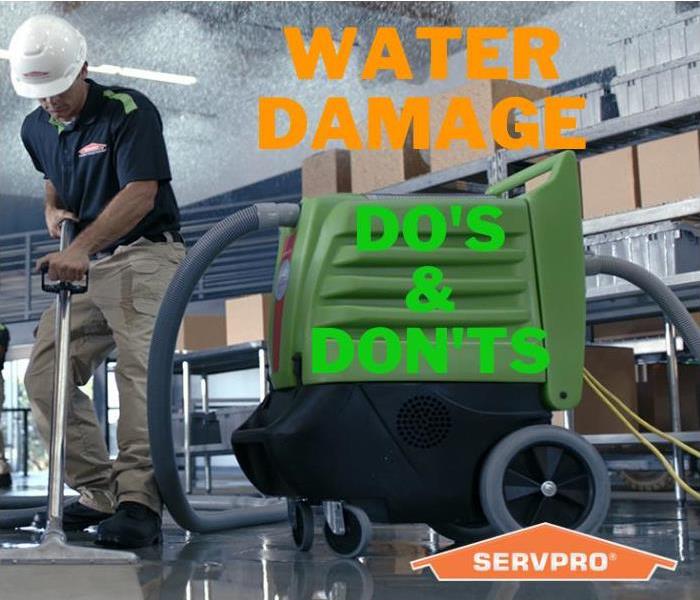Water Damage Emergency Do's and Don'ts
12/22/2020 (Permalink)
From a Clean Water Source
DO:
- Shut off the source of the water if possible or contact a qualified party to stop the water.
- Turn off circuit breakers for wet areas of the building, when access to the power distribution panel is safe from electrical shock.
- Remove as much excess water as possible by mopping and blotting.
- Wipe excess water from wood furniture after removing lamps and tabletop items.
- Remove and prop up wet upholstery cushions for even drying.
- Place aluminum foil or wood blocks between furniture legs and wet carpeting.
- Remove any paintings, art objects, computers, documents and other materials that are valuable or sensitive to moisture.
DON’T:
- Enter rooms with standing water where electrical hazards may exist.
- Enter affected areas if electrical outlets, switches, circuit breakers or electrical equipment are exposed to water.
- Leave books, newspapers, magazines or other colored items on wet carpets to cause staining.
- Use your household vacuum cleaner to remove water, possibly causing electrical shock or damage to the vacuum cleaner.
- Use TVs or other appliances while standing on wet carpets or floors, especially not on wet concrete floors.
- Turn on ceiling fixtures if ceiling is wet or enter rooms where ceilings are sagging from retained water.
From Contaminated Water Source
DO:
- Avoid all contact with sewage and items contaminated by sewage.
- If exposed to harmful waste, OSHA recommends a post-exposure medical evaluation. Consult your local health department or physician.
DON’T:
- Turn on the HVAC system if there is a possibility of spreading contaminated air.
- Use household fans to dry the structure and spread contaminants.
From Harmful Waste
DO:
- Stay out of affected areas.
- Call emergency service personnel if the situation is life-threatening.
DON’T:
- Attempt cleanup of any kind.
- Touch or handle items that might be contaminated with bodily fluids.






 24/7 Emergency Service
24/7 Emergency Service
